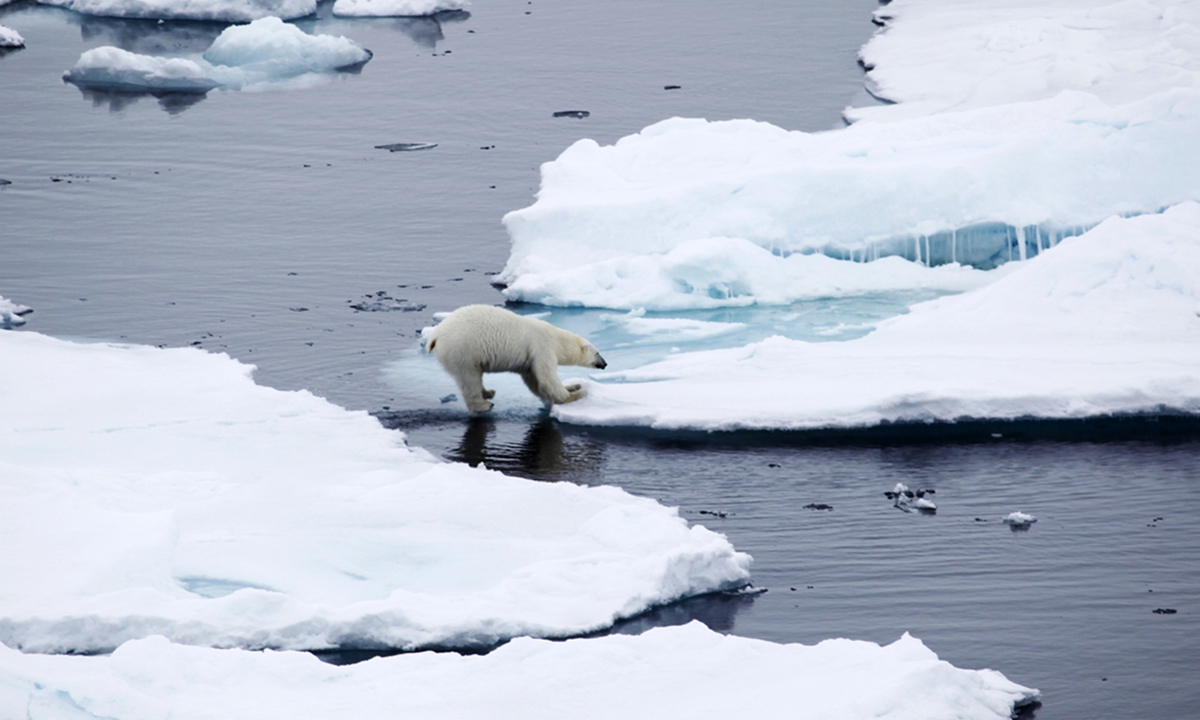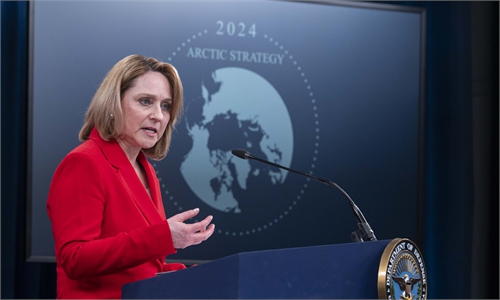
Photo: VCG
A medium-sized icebreaker of the US Coast Guard (USCG) recently experienced a fire while underway, forcing it to abandon its annual summer Arctic patrol mission. This incident highlights the deficiencies of the current US icebreaker fleet.Aware of its significant shortcomings in this area, the US recently signed a trilateral agreement with Canada and Finland, known as the ICE Pact, aimed at jointly developing icebreaker research and manufacturing capabilities. This move is intended to reverse the lagging position in the icebreaker competition. So, can the "icebreaker alliance" challenge Russia's dominance in the Arctic?
Amid global climate change, Arctic temperatures are gradually rising. This shift brightens the prospects for the development of shipping lanes, oil and gas, and fisheries resources in the Arctic region. Against the backdrop of the increasing strategic value of the Arctic Ocean, the competition for icebreakers has quietly begun.
In the race for Arctic icebreakers, the main players include Russia, Canada, Finland, Sweden and the US, with Russia leading with a fleet of around 40 icebreakers, surpassing the combined fleets of Canada, Finland, Sweden and the US. When ranked by the number of icebreakers, the US comes in last with only two vessels. It's no wonder think tanks in the US focusing on Arctic strategic competition have raised alarm bells about the "icebreaker gap."
Currently, the US' icebreakers are all operated by the USCG, with only one heavy and one medium icebreaker available, both of which are aging. Between 2004 and 2005, the US was completely without a usable icebreaker, having to lease Russian icebreakers for scientific research support missions. In 2012, the US finally initiated an acquisition program for heavy icebreakers, but various flaws were soon exposed. The foremost issue was design problems - the American shipbuilding industry had not engaged in the design and construction of heavy icebreakers for over 50 years, leading to significant delays in the design of heavy icebreakers.
In fact, years ago, the US was looking at leasing polar icebreakers from Finland or buying polar icebreakers from NATO allies or friendly Arctic nations. But at that time the law required USCG vessels to be constructed in US shipyards.
After many years of struggle, the US has finally recognized that seeking external assistance is its only viable option to overcome its current predicament.
First, Finland has significant expertise in the development and construction of icebreakers. The country has a complete set of capabilities, ranging from ice tank testing to shipbuilding. For a long time, Finland's biggest icebreaker customer has been Russia.
Second, Canada has a significantly longer Arctic coastline than the US and has traditionally placed a high priority on the development of icebreakers, driven by strong demand. From the US perspective, the ICE Pact is a practical means to address its own shortcomings. The joint statement stipulates that "we will commit to a collaborative effort to continue building best-in-class Arctic and polar icebreakers and other Arctic and polar capabilities in each of our respective countries by sharing expertise, information and capabilities." This is largely seen as a way for allies to support the US. This move shows that the US is taking advantage of its leadership and strong position among its allies to address its own goals and requirements.
Third, the current ICE Pact has only established high-level agreements among the US, Canada and Finland. According to information from the US government, the three countries will develop a joint memorandum of understanding that will outline a framework for how this arrangement will be implemented within each country by the end of the year, leaving room for uncertainty in the period. A US official said in July that US allies want 70 to 90 icebreakers over the next decade. This number reflects the urgency with which the US seeks to close the "icebreaker gap."
However, this is merely an aspiration, as developing and sustaining such capabilities is a complex and gradual process. Key issues such as how the three countries will collaborate and how to navigate potential regulatory obstacles in the US remain pressing. Therefore, the ultimate outcome of the ICE Pact will need to be observed over time.
The author is a maritime information research professional. opinion@globaltimes.com.cn


